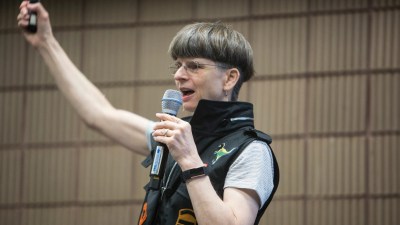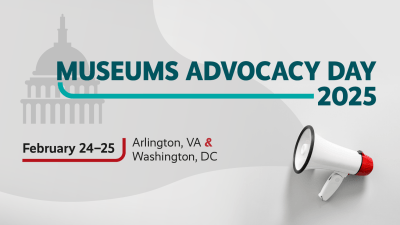
This tipsheet was developed by Dana P. Hundley (she/her), recruiting and people program consultant. Dana has recruited across industries, job functions and experience levels in agency, inhouse and consulting capacities. Along the way, she’s built dynamic people programs from recruiting and communications strategies and interviewing processes, to early talent & internship programs, to redeployment and internal mobility, and more. She has managed the Oakland Museum of California’s paid-internship program and special talent projects, and consulted on The Exploratorium’s paid-internship program.
With many nonprofits facing a labor shortage in today’s volatile talent market, organizations across industries are facing hiring challenges. Recruiting strategies can vary based on industry, organization, type of position, and an organization’s capacity and bandwidth to recruit and hire – there is no one size fits all.
Regardless of your museum’s circumstances, recruiting during a labor shortage or for hard-to-fill positions can be an opportunity to get creative with out of the box thinking about positions, talent pipelines, community engagement, and the types of experience that can make an impact on your organization.
Here are some actionable tips and short and long-term strategies to support recruiting for hard-to-fill roles:
Reassess Job Specs
As your team is creating the job description and mapping out the requirements and “nice-to-haves,” be sure to ask yourself, “Is this really necessary for someone to be successful in this role?” You may have requirements (either outlined in a job description or simply in your head) about what a candidate needs to bring to the role, but preconceived notions can get in the way of finding some really incredible candidates.
One of the most glaring examples of this is when it comes to education requirements. While education can certainly be valuable, rather than requiring a specific degree, focus instead on determining what exactly is valuable about educational attainment and how it might benefit someone in this role.
A good practice when deciding if a “requirement” is legitimate or necessary is to ask yourself (and others, to incorporate different perspectives and potentially reduce bias), “What are we expecting with this requirement?” The goal is to drill down to what is actually needed for a candidate to be successful in the position and organization.
At that point, brainstorm other pathways or experiences that could result in the skills or attributes necessary for the position. If there are other ways a candidate can obtain those skills, you might consider removing the requirement or instead including the drilled down skills and attributes in the job description. Brainstorming ALL the ways someone can bring value to the position and your organization can be a huge opportunity to creatively broaden your talent pool and, ultimately, hire people with diverse experiences and perspectives.
If you’ve done this and your list of requirements is still hefty and limiting, it’s time to re-evaluate the job specs because expectations for the role may be misaligned.
Streamline Your Interview Processes
So many organizations lose hiring momentum and quality candidates due to clunky, disjointed, and unnecessarily long interview processes. Before you post a job, make sure you’re clear on the interview process and ideal timeline. Who needs to be involved? What type of interviews make the most sense for the role? And what is the purpose of each step in the interview process? Ideally, you’re running a similar interview process for all of your roles to avoid reinventing the wheel, to ensure employees are comfortable with the process, and to provide a strong candidate experience across your roles.
Streamlined, concise, and impactful interview processes can happen in a lot of ways but should always provide value to the museum and candidate. When you have a solid understanding of the overall goals and purpose of each step in the process, opportunities to shift, shorten, or remove certain steps become clearer. And don’t wing the interviews – have a plan and a set of questions that map to the goals and purposes of each step. This will ensure you get the information you need to make an informed decision while providing a strong candidate experience. Remember, the candidate is interviewing your museum as much as you are interviewing them and that is a good thing!
While the length of an interview process will vary based on the museum and position, I like to aim for some type of candidate touch point once per week. This can be an actual interview or, if there is a gap between steps, some other type of communication to keep engagement and momentum with the candidate.
Communication Can Make the Difference
I can’t say enough about how important communication is in recruiting, interviewing, and hiring – even more so in a labor shortage and for hard-to-fill roles. Having a point of contact for your candidate can play a huge role in creating a connection, understanding their motivations, and, ultimately, making an impactful hire. In your intro conversation with the candidate (either in the initial recruiter interview or in scheduling the first interview, depending on your process), share an overview of the interview timeline and what the candidate can expect in terms of process and ongoing communication. This is also a great opportunity to ask if a candidate is in process anywhere else so you can make adjustments, within reason, to line up timelines.
Then, continue to check-in with the candidate during the process. I like to do this over the phone to ask clarifying questions in real time and continue to build connections. Additionally, verbal conversations can provide insight that is sometimes harder to get from an email. I’ve had multiple candidates say the interview process and consistent communication played a role in saying yes to an offer.
For candidates you’re not moving forward with, be upfront and timely to the best of your ability. One of the biggest complaints from candidates is not hearing anything back from companies they’ve applied to or are interviewing with. Again, to the best of your ability, communicate with candidates if you know you won’t be moving forward with them.
It can be sensitive to tell a candidate they won’t be moving forward in the interview process – consult your HR team or consultant for messaging and guidelines.
Equip Your Team For Hiring
For a streamlined interview process to work as intended – and for impactful hires to be made – the interview team must be equipped to evaluate candidates, participate in interviews, and provide the right feedback. Make sure your interview team understands the interview process, has a grasp on the position and its function within the team and museum as a whole, and feels comfortable in front of candidates.
There are many ways to train and equip your interview team. Some tactics include kick-off meetings to go over the position, interview process and team roles; creating a central hub of interviewing resources that employees can access; and holding larger trainings on general interviewing skills as well as mock interviews for practice. When possible, I like to have prep calls with the interview team before each stage to go over best practices, interview questions, and goals for the interview. I also like to have individual meetings with interviewers who may be new to the process or would like additional support in providing a strong interview experience.
Open Up Talent Pipelines
When you’re recruiting for hard-to-fill positions, it can be beneficial to open up your talent pipelines to increase the number of quality incoming applicants. First, evaluate the job boards you’re posting to and whether they are producing the type and volume of candidate that makes most sense for your role. If applicable, identify additional job boards that have the potential to reach your target candidates. The goal is not to increase candidate applications for the sake of volume (then you’re left sifting through a lot of applications) but to increase and reach the most qualified and competitive candidates for your role. I recommend a mix of larger, broader job boards along with more niche or targeted ones for your specific role and industry.
Outside of job boards, identify groups and organizations with whom you can build relationships to share the open position. These organizations may have job boards, newsletters, or community boards where they can share your listing with their members. With universities and some industry organizations, you can also opt into career fairs for ongoing employer branding efforts, even when you don’t have an immediate open position. Building relationships with potential talent pipelines is a great way to make your recruiting process proactive rather than reactive.
Recruit Proactively vs. Reactively
When you can, start recruiting before you need to – especially when you have a role you know you’ll always need due to natural attrition or seasonal/cyclical needs. This is where maintaining and nurturing your recruiting channels and talent pipelines can be especially beneficial. You can also keep an evergreen “open talent” job on your career site for all talent or for specific roles – just make sure the message is clear that this “open talent” job is not for immediate hire but to join your talent community for future roles or ongoing hiring. This way, when you’re ready to hire, you have a head start with a group of candidates who have already shown interest in your museum or type of role who you can reach out to directly.
Create a Culture of Recruiting
If you really think about it, every member of your organization is a recruiter. When they talk about their job, they’re sharing information (hopefully positive) about what it’s like to work at your museum. Companies can benefit from getting their employees involved in recruiting to deepen talent pipelines. Keep the entire staff in the know about what roles are open and, at a high-level, what you’re open to in a candidate, and how staff can share referrals. When appropriate, ask employees to share the open roles with their communities or on social pages, especially LinkedIn. You can equip employees with LinkedIn how-to guides/tips, content, suggested posts, and links to make sharing easy.
Send a museum-wide email or other communication when a new position is posted with the job description link, a few high-level highlights of the position, and your “call to action” (share on LinkedIn, send us referrals, etc.). You can also make recruiting updates a part of all-staff meetings.
Get Clear on Total Comp & Benefits
In a tight candidate market, all of the details matter. Make sure you’re very clear on the total compensation package and employee benefits for new positions. This includes a competitive base salary band or range; details on health benefits and any additional health or wellness benefit programs employees can enroll in, including stipends (child care, wellness, commute, etc.); and, if applicable, a clear bonus structure. You should also review any additional employee benefits that may not be easily quantifiable but may align with candidate motivators. For example, be ready to talk to candidates about growth and development opportunities, volunteer days, flexible and/or hybrid schedules, and other less common benefits that might be available at your museum.
In the current market in which candidates may have multiple, competitive offers, knowing the total compensation and benefits package can help you communicate clearly and effectively the reasons to join your museum.
You can create a general FAQ sheet for your total compensation package to share with your candidate point of contact and interview team as needed (this is not the offer letter and won’t have a specific salary or bonus structure). To make sure you’re including all benefits, poll current employees on what they find valuable about working at your museum: you may unearth a previously unknown or undefined benefit to share with potential employees.
Inward mobility/invest in your existing talent
In all of your hiring, don’t forget about a very important talent pool – current employees! In addition to encouraging internal applicants, intentionally look at opportunities to train and develop current employees who may be ready for a change or challenge. Internal employees have a wealth of institutional knowledge they will bring to the new role and may simply need some training in specific functions to transition and grow into your hard-to-fill role.
Additional Resources
- Workforce & Labor resources in the AAM Resource Library
- So You Want to Work in a Museum? book by Tara Young
- Hiring Tips to Create Value and Inclusion for all Disciplines in Museums blog post by Ayanna Reed








Comments